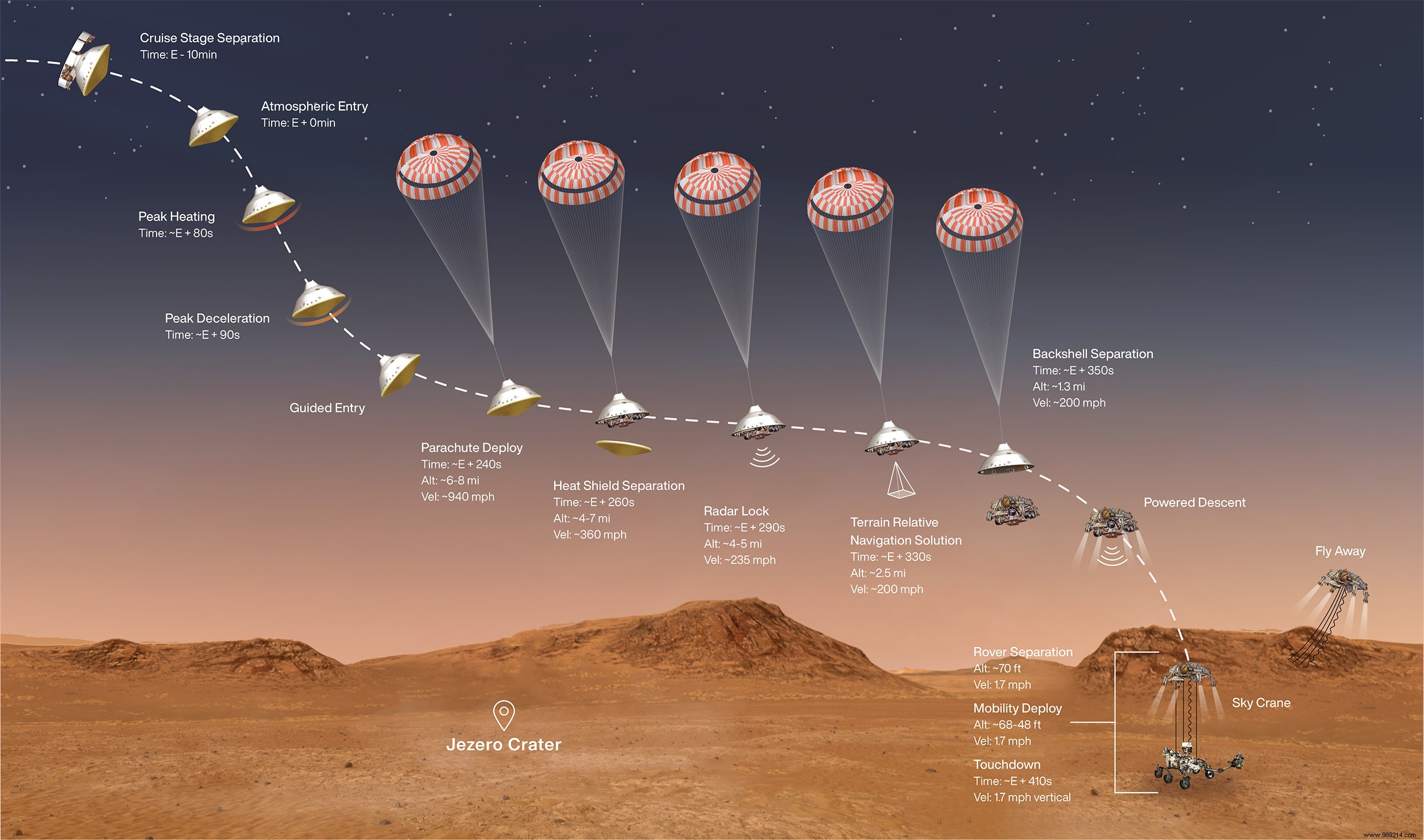The Perseverance rover's long journey to the planet is almost over. The vehicle, launched on July 30, is expected to land inside Jezero Crater on February 18, as scheduled, NASA has just announced.
Perseverance is the centerpiece of the US Mars 2020 mission ($2.7 billion). Its main objective will be to search for traces of past life in the floor of the Jezero crater, a forty-five kilometer wide formation once lined with a lake and a delta of rivers.
Naturally, it will likely be difficult for Perseverance to definitively prove the presence of fossilized life, if at all, the mission team members said. Also, the rover will be responsible for sealing the most promising samples for a future mission jointly led by NASA and ESA to bring them back to Earth in the early 2030s. a first.
These Martian materials can then be studied by scientists using state-of-the-art instrumentation, just as was the case with the lunar rocks of the Apollo missions. “ These samples will thus have the potential to profoundly change our understanding of the origin, evolution and distribution of life on Earth and elsewhere in the solar system ” , said Lori Glaze, director of NASA's Planetary Science Division.
Naturally, all this will only be possible if the rover lands successfully. We can never repeat it enough, but it is very complicated to land on this planet, as its atmosphere is thin. Especially since with its 1025 kilos on balance, Perseverance is heavier than any other payload ever sent to Mars.
“I don't think I'm exaggerating when I say that the entry, descent and landing are the most critical and dangerous part of this mission ” , notes indeed noted Allen Chen, of NASA's Jet Propulsion Laboratory. “Success is never assured. And that's especially true when we're trying to land the biggest, heaviest, most complicated rover we've ever built on the most dangerous site we've ever attempted to land." .
Just as was the case with the Curiosity rover, the most critical moments of this mission will probably be the last minutes of the landing phase; seven minutes of terror during which Perseverance will no longer be able to communicate with Earth.

This mission is also expected to pave the way for future groundbreaking exploration efforts. A small rotorcraft named Ingenuity, for example, will be deployed to Mars shortly after Perseverance lands. Its objective will be to carry out several test flights , the first ever performed by a vehicle on another planet. If Ingenuity performs well, then these small helicopters could be roaming the Martian skies in the near future, serving as scouts for rovers and other human explorers, and/or collecting data themselves.
Perseverance also features an instrument called MOXIE (Mars Oxygen ISRU Experiment) which aims to generate oxygen from the thin Martian atmosphere dominated by carbon dioxide (CO2). Such technology, when scaled, could help future explorers settle on the Red Planet.